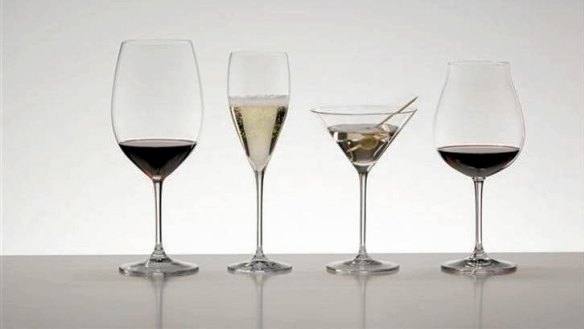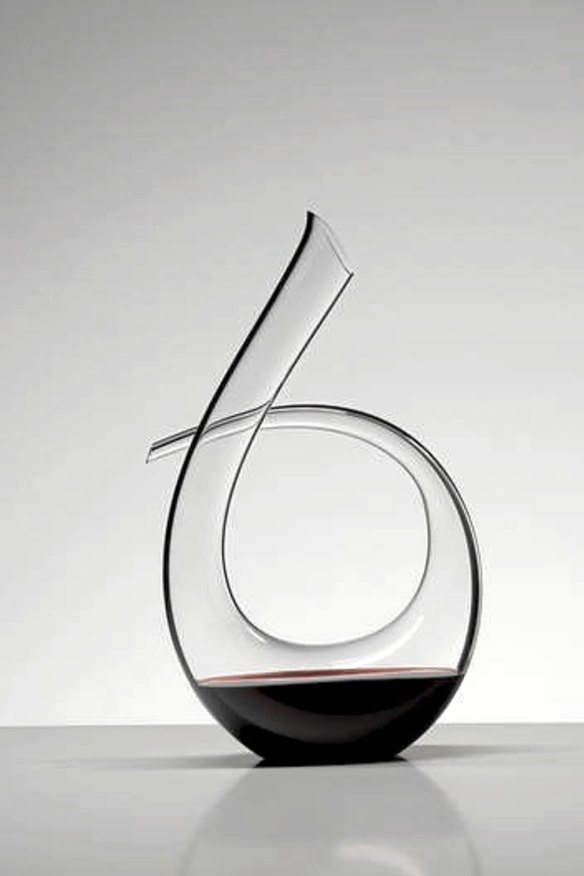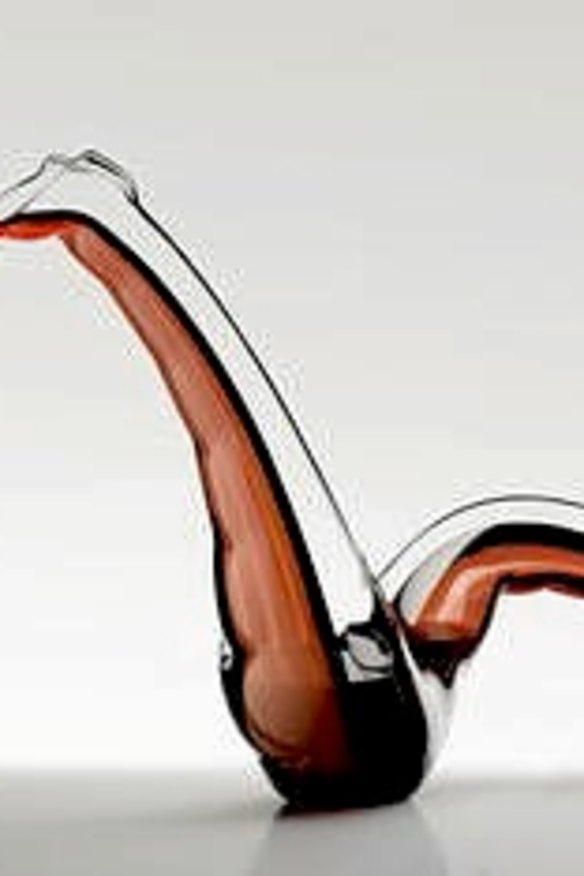For the wine lover
The right accoutrements go a long way.

The old saying ''perception is reality'' doesn't match current understanding of how we taste. Sensory cues seemingly unconnected to smell and taste affect not just the psychology of taste, but how we physically taste. It seems that when we expect something to taste a certain way, it will. So if we're to squeeze the greatest amount of pleasure from wine, it makes sense to build a rich sensory experience even before we reach for the bottle. Hence, this guide to wine gifts leans as much to the aesthetic as the practical.
A wonderful quality of good wine accoutrements is their durability. Crystal decanters and glassware, for example, survive the generations.
Wine decanters

There's little practical reason to decant young modern wines. In the old days, less precise winemaking meant many wines contained traces of hydrogen sulphide or free sulphur dioxide, which tended to dissipate with a good splash of air. That's seldom the case now, though very young, cellarable whites often contain sulphur dioxide; and some modern chardonnays retain traces of various sulphur compounds. Decanting tends to take the edge off these, too.
However, some young reds seem to release more aroma and flavour after a good splash into a decanter and an hour or two of exposure to air. Old reds should be decanted to separate the clear wine from the harmless sediment deposited during years of maturation.
That's the practical side. But crystal decanters add hugely to visual appeal. Smooth-sided decanters allow the colour to shimmer and sparkle.

Decent crystal decanters begin at about $50. Darling of the wine world, Riedel, offers decanters on its website from $64.95, moving through the price ranges and peaking at $900 for its quirky Twenty Twelve model (dubbed the dragon, stockists at riedelglass.com.au). But for that price, or near it, Santa might bring a glorious old antique - perhaps a George III-era (circa 1815), selling at $785 in Hartley Cook's Grafton Galleries (Shop 1, 15 Boundary Street, Rushcutters Bay).
Cook says unlike antiques that might sit in a glass cabinet, ''we can use an old decanter in the same way it was used 200 years ago''.
Wine glasses
We possess only one nose and one tongue, but if we believe Riedel, every wine deserves a unique glass shaped to deliver aroma and flavour to just the right places.
Beautiful wine glasses create a sense of anticipation, display wine in its best light and capture its full spectrum of aromas. At a Quay degustation lunch in August, a unique wine glass arrived with each of eight food courses. Small volumes of wines partly filled brilliantly polished glasses. The low fill allowed light to flood through, and sufficient room to swirl the liquid, releasing the aromas. The best was Phillip Jones's magnificent 2010 Bass Phillip Gippsland Pinot Noir - a highly aromatic, shimmering pool of red-purple sloshing leisurely around the base of a huge, fine, crystal glass.
Riedel remains the hot wine glass, if expensive, though the company also owns the Spiegelau and Nachtmann brands. Indicative of Riedel's combined functionality and aesthetics, most Australian wine shows and many wineries and restaurants use the company's Ouverture Magnum glass, which is not offered retail. However, the Ouverture red wine glass, offered on the company's website, at $39.95 a pair, appears to be the same product. The glasses are widely distributed retail, including in fine wine stores, and appear occasionally as well-priced job lots at Costco.
Cork pullers
''Good 17th-century technology,'' one Australian winemaker says. But cork lingers on - a fringe-dweller in Australia and New Zealand, though the dominant seal in some countries, including Italy, France and the US. If you buy wine as the need arises and drink only Australian and New Zealand wine, there's no need ever to own a cork puller again. But if you drink imports or have a cellar with older vintages under cork, you still need a device of some kind to rip or push the cork out.
Corkscrews and parallel, metal-prong devices both pull corks out from above. A needle and pump, on the other hand, pushes corks out with compressed air. All of these devices do the job.
Metal prong cork pullers: Metal prongs, like the German-made Monopol Ah-So cork puller, work easily once you get the knack. They're particularly handy for extracting old corks that might crumble using a corkscrew. Even better, they're perfect for an old dinner-party trick: whip the corks out of cheap and expensive wines before the guests arrive, swap the contents, replace the corks, and no one's the wiser. You can find them online for $49.95.
Corkscrews: The metal in the screw should be of a narrow gauge, so it worms easily through the cork, with wide loops (at least five of them) to give purchase, and of high tensile strength so it doesn't straighten out under tension. Corkscrews should also provide leverage - a metal extension that rests on the collar of the neck in the old waiter's friend styles (these require considerable strength); or the more highly levered versions like the Anolon Sure Grip ($24.95 at Kitchenware Direct) or the Starin Elegant ($30.20 at shopbot.com.au).